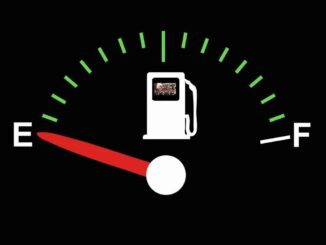
Are you having a rough engine idle, possibly rising and falling (RPM), or difficulty maintaining a steady rate of rotation?
If you are, that is not a normal operating condition. And, there can be a variety of reasons for it to happen.
So, it is best to try to diagnose and fix a rough engine idle, before it gets worse and expensive!
Also, a rough engine idle can cause reduced fuel economy, poor performance, starting issues, or potential major engine problems. So, rough engine idle is a common problem, of which the exact cause, can be difficult to diagnose. Because, several factors may come into play. However, how your engine idles, is a good indicator of its overall health.
The reasons for a rough idle can vary, with some being cheap easy fixes, and some requiring more complex repair procedures.
First, Check If You Have Any Engine Trouble Codes
So, today’s modern vehicles, have sophisticated Powertrain Control Module (PCM). They monitor the operation of the, sensors, actuators, fuel, combustion and exhaust systems. As a result, the Powertrain Control Module (PCM), can detect small deviating operating parameters. And, store related trouble codes as necessary.
You can use a code reader to identify the specific fault. And, then determine if that malfunction is what is causing, the rough engine idle. The code may indicate the component, circuit or system involved in the fault. As a result, this gives a starting point for your diagnosis.
What Are The Conditions, When The Rough Engine Idle Occurs:
- Does it happen on cold starts, after the vehicle has been parked for hours?
- Does it happen, when you restart a warmed up vehicle?
- When does it happen? Does it happen all the time?
- Are there any, odd noises?
- Do you see any smoke, coming out?
When looking for solutions for a rough engine idle, make yourself a check list to narrow down, the possibilities. While a rough engine idle may seem to be a simple inconvenience. It can often indicate a deeper problem, within the engine. The vehicle should be inspected, and repaired as soon as possible. Because, small problems have a way of turning into, expensive repairs.
A long list of systems, components and electronics, can cause a rough idle or engine misfire. That makes diagnosing the root cause a challenge, especially if you aren’t sure where to look. Ultimately, everything from the ignition and fuel injection systems, to valves and pistons can cause a rough engine idle.
The Most Common Things To Check For A Rough Engine Idle:
Vacuum Leaks
Anything that upsets the “air fuel” balance, will cause a rough engine idle. Symptoms include, the check engine light (CEL) coming on, rough engine idle, stalling and a hissing sound. So, the engine may run well at higher (RPM)s. But, surges, runs rough and struggles to maintain stable (RPM)s at idle. The #1 Cause Of A Rough Engine Idle Is, A Vacuum Leak.
Carbon Buildup On Electronic Throttle Body, Or Idle Air Control (IAC) Valve
So, late model fuel injected engines, have electronic throttle bodies. But, no longer use, an Idle Air Control (IAC) Valve. So, carbon buildup in the throttle body, can decrease the airflow. But, the (PCM) doesn’t know, the carbon buildup is there. All it knows is that, the engine isn’t running right, based on it’s calculated opening. So, if you have an older vehicle, you may have a dirty Idle Air Control (IAC) Valve. Consequently, some idle air bypass or Idle Air Control (IAC) Valves, can be cleaned.
Dirty Mass Airflow (MAF) Sensor
So, the Mass Airflow (MAF) Sensor, is located right after the air filter. And, is responsible, for telling the (PCM) exactly how much air, is entering the engine. Over time, paper fibers from filters and crankcase vapors, can build up on the hot wire and bake on. That baked on crud acts as an insulator, causing the (PCM) to get the wrong readings. Sometimes, you can clean the Mass Airflow (MAF) Sensor yourself, with an aerosol can of (MAF) Sensor cleaner.
Fuel Injectors
Sometimes dirty fuel injectors, can be the root cause, of a rough engine idle. Fuel injectors disperse fuel into your vehicle’s engine, at a precise angle and quantity, to ensure optimal performance. That being said, having Fuel Injector Deposits, are also a major contributor, to poor gas mileage. Using a fuel injector cleaner, is a simple way to prevent this problem. And, can help your engine to stay running smoothly, and efficiently.
Carbon Buildup, On Gasoline Direct Injection (GDI) Engines
In Gasoline Direct Injection (GDI) engines, the fuel injectors deliver fuel, right into the cylinder. So, the valves never get fuel sprayed on them. After shutdown, crankcase vapors rise to the top of the engine. And, then settle on the intake valves, where they condense and harden.
The result is, Carbon Buildup, that can cause a rough engine idle. Furthermore, fuel injector cleaners, will NOT remove this build up. Because, the cleaners never see the backside of the valves. You must inject a cleaner, through the intake, using a procedure known as, air induction cleaning.
Engine Valves
Exhaust and Intake Valves, can be a big problem, if they are allowed to buildup carbon. This can cause lower compression, as the valves might stick open.
Spark Plugs And Wires
A rough engine idle, can be caused by, spark plugs or wires. Spark plugs use the electrical current, received from ignition coils, to ignite the “air fuel” mixture within the combustion chamber. A plug that is damaged or installed incorrectly, can result in fuel being burned, at an inconsistent rate.
And, if the damage is bad enough, you may also notice, your engine running rough. So, replacing your spark plugs on time and using the right plugs, and installation techniques are critical. So, check your plugs and wires, to see what condition they’re in.
Exhaust Gas Recirculation (EGR) Valve
First, the Exhaust Gas Recirculation (EGR) Valve, is a mechanical device. And, just like valves and the throttle body, it can develop carbon buildup. And, most often that prevents it from, closing fully. When that happens, the (EGR) valve, allows exhaust flow at idle, which causes a rough engine idle condition. Most often, you can use a throttle body cleaner, to remove the carbon buildup.
Fuel Pump Or Fuel Pressure Regulator
If the Fuel Pump or Fuel Pressure Regulator is failing, and not delivering the proper amount of pressure or volume. Then, it simply won’t deliver the amount of fuel, the (PCM) expects to see. You must attach a fuel pressure gauge, to actually measure fuel pressure. Consequently, if your Fuel Pump or Fuel Pressure Regulator, doesn’t deliver the right pressure or volume, replace it.
Engine Coolant Temperature (ECT) Sensor
So, the (PCM) needs to know, the engine and air temperature, to calculate the right, “air fuel” mixture. If it’s getting the wrong readings, it will deliver the wrong amount of fuel, for a given amount of air. Engine coolant and air temperature sensors, usually don’t fail completely. Instead, they give false readings. So, if your engine is hard to start on cold mornings, requiring you to depress the gas pedal. That’s a symptom of, a failing Engine Coolant Temperature (ECT) Sensor.
Oxygen (O2) Sensor
So, your Oxygen (O2) Sensor, is part of your vehicle’s emissions system. It protrudes into the exhaust system, continuously monitoring the (O2) content, of the exhaust. It sends this information to the (PCM), which uses it to maintain the correct “air fuel” balance.
The Oxygen (O2) Sensor, can be adversely affected, by the high temperature environment it works in. As a result, it can become, covered with carbon deposits or simply wear out. When this happens, it sends incorrect information to the (PCM). The engine can run too rich or too lean. A too rich mixture, will result in poor fuel economy. A too lean mixture, will cause a rough engine idle.
Positive Crankcase Ventilation (PCV) Valve
So, the (PCV) Valve, is responsible for metering a set amount of airflow, from the crankcase to the intake. The Positive Crankcase Ventilation (PCV) Valve, contains a safety plunger, to prevent a engine backfire, from entering the crankcase. So, the plunger is an obstruction to airflow. Over time, oil vapor and carbon, can build up on the plunger, reducing airflow. That reduction in airflow, can cause a rough engine idle. In addition, a cracked (PCV) hose, can also cause a rough engine idle.
Air Filters
Most engine Air Filters, use a folded paper element, which can become clogged, if not changed at the appropriate interval. So, it is just as important for your engine to get enough air, as it is for enough fuel. Finally, a clogged filter, will reduce the flow of air into the engine, causing a rough engine idle.
Leaking Head Gaskets
Coolant in your oil, oil in your coolant, missing coolant, coolant overflowing out of the over flow tank and overheating. Are all signs of a Leaking Head Gaskets and they can easily cause, a rough engine idle.
Rough Engine Idle On Carbureted Engines
Older vehicles utilize a Carburetor, rather than a fuel injector. Black exhaust smoke, is a common indicator of a problem with the carburetor. A carbureted system, that is running well, should not produce excessive amounts of black smoke. So, look out for this, as a sign that something is wrong. Using a carburetor cleaner, is a simple step to help dissolve these carbon deposits, and keep them clean. And, that will help prevent or decrease a current, rough engine idle.
Conclusion
Consequently, an engine which is operating properly, should run smooth, without any excess noise. So, when you begin to have a Rough Engine Idle there are a number of possible causes. Consequently, how your engine idles, is a good indicator it its overall health.
And, as we always say, Is a wire loose? Did a vacuum line fall off ? Do not look for a complicated solution, to a simple problem. Because, it is common to have a problem in one area, that impacts three or four others.
BY DANNY BENDER




